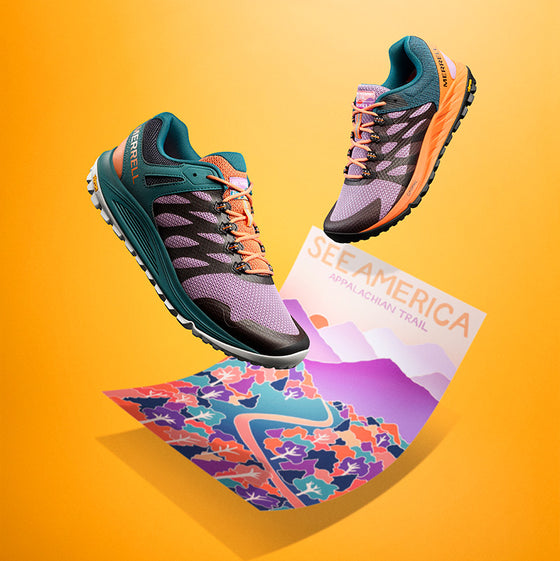Daisy Patton is originally from Los Angeles, but she lived in Oklahoma for a long time before heading to Boston for graduate school. She's currently based in Colorado and recently she contributed 3 designs to See America. We caught up with her to ask some questions about her, her process, and how all that moving contributed to her designs.

Daisy's selfie taken at Rocky Mountain National Park.
Describe how you became an artist.
I think it's pretty common for many artists to feel like they just always were artists. I've drawn and painted from an early age, and it just has always been with me. I really can't imagine being happy doing anything other than art. I like creating and interpreting what surrounds us culturally and socially, and art is my form of communication in a way. After graduate school, I took a year-long break, and now I'm working full-time as an artist.
What’s your connection to the See America campaign?
I've spent a lot of time living around the continental US—I've officially lived in each time zone! When I saw the Creative Action Network's call for See America, it was perfect timing since I had recently visited both Rocky Mountain NP and Dinosaur National Monument and felt that I had some inspiration to draw from for designs. Since I am a recentish (it's been 2 years now) transplant to Colorado, I enjoyed finding a way to connect with the state and the landscape by focusing on these parks.

Daisy's rough draft (above), and the final design (below).
How do you come up with your ideas and what’s your process like?
When it comes to drawings and illustration work, I really like simple, "cute" designs; I find it's an outlet from my more serious art projects, which can be sometimes intense. As with most people, my artwork is complex in that I like to work in varying degrees of intensity and lightness, so illustration work is a fun thing for me to do!
Generally, I start with pen and paper, sketching the outlines of what the illustration will become; my concepts tend to be humorous and also true to the topic, i.e. the park that I'd visited. For instance, with Dinosaur National Monument, I liked the idea of dinosaurs visiting as 1950's style tourists, seeing their relatives in the wall of bones behind them. It was my first illustration for See America, so I'm really considering another version of that design.
With the Rocky Mountain set, I really love anthropomorphizing animals and find myself most attracted to the wildlife in nature, and it was just an immediate idea to dress them up as if they were park visitors, not residents. This way, the viewer gets to imagine themselves also visiting the park like the bundled up chipmunk or back-packing bears. We saw elk when we visited Rocky Mountain, so I wanted to use them as subject matter, and while I'm a bit terrified of bears, they'd be natural back-packers, at least to me!
So after I've drawn out and inked over my initial drawing, I scan the image and pull it into Photoshop to clean up the lines, Illustrator to finesse them, and then back to Photoshop for coloring in and adding text. I know I probably have a longer process than necessary, but it's worked for me and is something I find enjoyable. Really, the most time consuming part is figuring out the concept and cleaning up the line-work; as a painter, coloring in is a lot of fun!
What do you plan to do with the proceeds you receive from CAN?
My plans for the revenue from CAN is, like many artists, to filter back into my work for supplies and other opportunities. Most of all, I really love hearing about how others enjoy my work, so money is just a really great, but important, bonus.
What are you working on these days when you’re not designing for CAN?
I've got an illustration blog on Tumblr called "Venezuelan Sayings," which consists of illustrated Venezuelan expressions and idioms with translations and the original Spanish. I consider it a collaborative art project now, especially since I get a lot of suggestions from other Venezuelans, and in a way, it's a collection of cultural ephemera.
I also have two painting series, "Forgetting is so long" and "A Reconstructed Family Reunion," both of which deal with family photos and memory. Additionally, I'm trying to write a graphic novel about German tourists that went missing in Death Valley back in 1996, and I have a digital media project called "Deterioration" where I convert the MRI scans I get once a year for my Multiple Sclerosis into beautiful, graphic objects. As you can probably tell, I love being busy and having multiple projects going on simultaneously! All series (except the graphic novel, since it's still in the early stages) can be seen in more detail on my website, http://daisypatton.com.

Daisy and her art based on her MRI scans.
You can (and should!) follow Daisy on Twitter.


